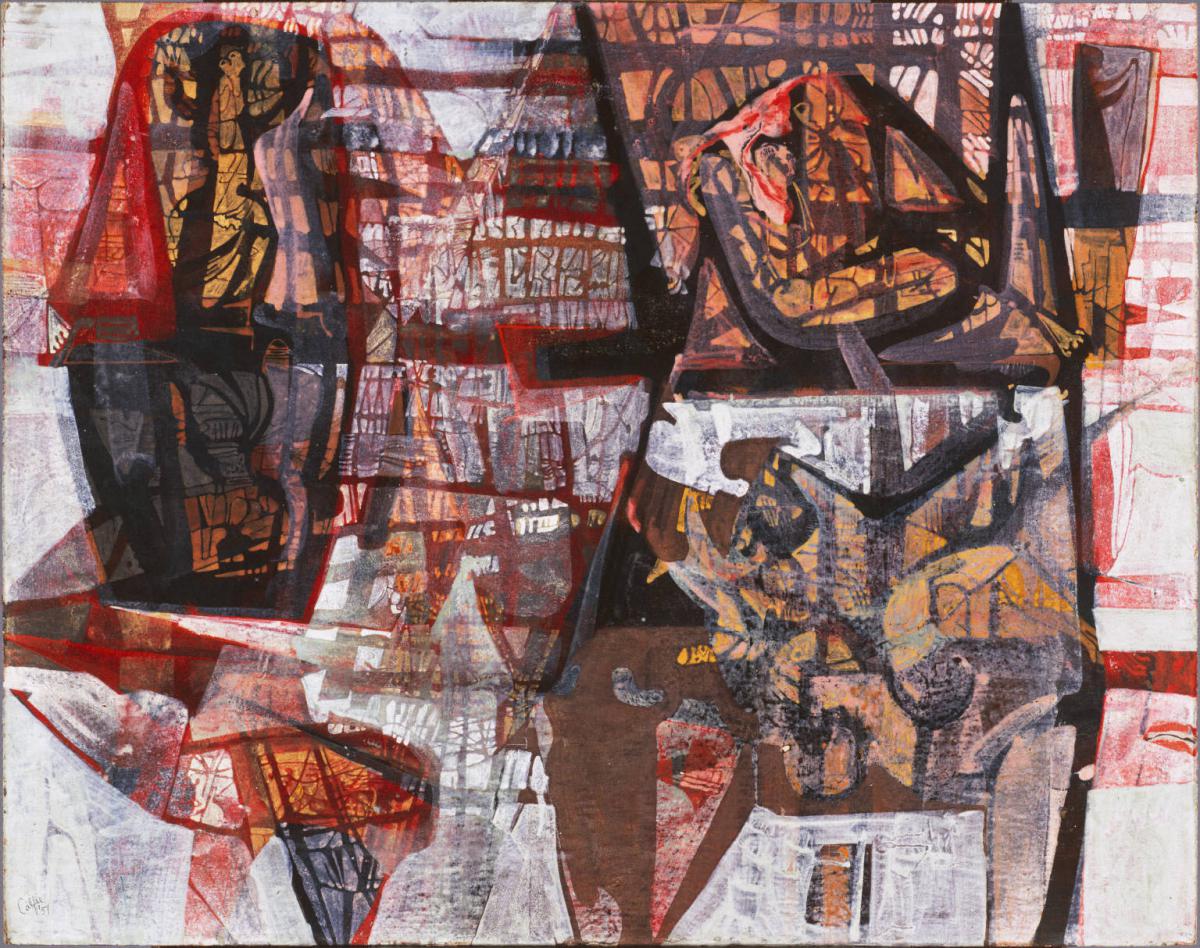Flooded Wood
William Calfee ( 1951 )

Born in Washington, D.C., Calfee first embarked on his artistic career by studying at the Phillips Gallery Art School and the Corcorcan School of Art. After a brief sojourn in Europe and in other areas of the US, he made his way back to D.C. and remained an integral member of the arts community for the rest of his life.
A committed modernist, Calfee’s work, in particular Flooded Wood, explored the realities of nature through abstract notions. The theme of this abstraction is more implied than explicit. The color is limited to black, red, white, gray, and a low-keyed sandy orange. Because the colors tend to be distributed rather evenly over the surface, emphasis is placed on value changes rather than color position. Calfee avoided reference to illusionistic space, subject, or color, placing major interest on the invention of shapes. In some cases the shapes are the product of accident, because they are created by a series of overlays of translucent color and line. Calfee then stressed these “found” shapes as he elaborated the surface.
To establish Flooded Wood’s principal architecture, Calfee used a heavy line along the top third of the painting to divide the composition horizontally. In juxtaposition, he included a series of diagonal divisions which, when they strike the horizontal, are deflected to a reverse diagonal—like reflections in water. The compartments created by these horizontal-diagonal divisions then serve as containments for a complex play with shape. While this strategy allows intense moments of value difference to occur, the painting’s surface reads essentially as an all-over pattern.